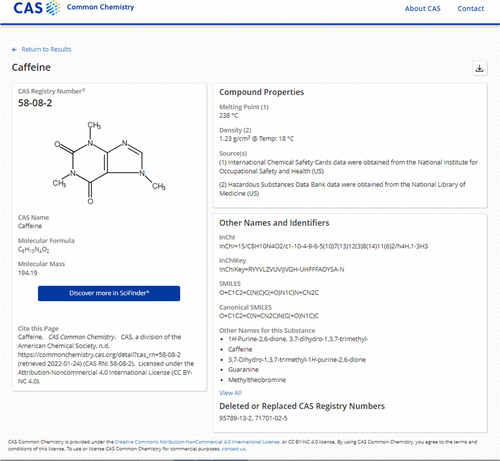|
Trimethylolpropane Triglycidyl Ether
Trimethylolpropane triglycidyl ether (TMPTGE) is an organic chemical in the glycidyl ether family. It has the formula C15H26O6 and the IUPAC name is 2- ,2-bis(oxiran-2-ylmethoxymethyl)butoxymethylxirane, and the CAS number 3454-29-3. It also has another CAS number of 30499-70-8 A key use is as a modifier for epoxy resins as a reactive diluent. Alternative names * Oxirane, 2,2′- 2-oxiranylmethoxy)methyl.html" ;"title="2-ethyl-2-[(2-oxiranylmethoxy)methyl">2-ethyl-2-[(2-oxiranylmethoxy)methyl1,3-propanediylis(oxymethylene)]bis- * Butane, 1-(2,3-epoxypropoxy)-2,2-bis[(2,3-epoxypropoxy)methyl]- * Oxirane, 2,2′-2-ethyl-2-[(oxiranylmethoxy)methyl]-1,3-propanediyl]bis(oxymethylene)]bis- * 2,2′-2-Ethyl-2-[(2-oxiranylmethoxy)methyl]-1,3-propanediyl]bis(oxymethylene)]bis xirane* 1,1,1-Trimethylolpropane triglycidyl ether Manufacture Trimethylolpropane and epichlorohydrin are reacted with a Lewis acid catalyst to form a halohydrin. The next step is dehydrochlorination with sodium hydrox ... [...More Info...] [...Related Items...] OR: [Wikipedia] [Google] [Baidu] |
International Union Of Pure And Applied Chemistry
The International Union of Pure and Applied Chemistry (IUPAC ) is an international federation of National Adhering Organizations working for the advancement of the chemical sciences, especially by developing nomenclature and terminology. It is a member of the International Science Council (ISC). IUPAC is registered in Zürich, Switzerland, and the administrative office, known as the "IUPAC Secretariat", is in Research Triangle Park, North Carolina, United States. This administrative office is headed by IUPAC's executive director, currently Lynn Soby. IUPAC was established in 1919 as the successor of the International Congress of Applied Chemistry for the advancement of chemistry. Its members, the National Adhering Organizations, can be national chemistry societies, national academies of sciences, or other bodies representing chemists. There are fifty-four National Adhering Organizations and three Associate National Adhering Organizations. IUPAC's Inter-divisional Committee ... [...More Info...] [...Related Items...] OR: [Wikipedia] [Google] [Baidu] |
CAS Registry Number
A CAS Registry Number (also referred to as CAS RN or informally CAS Number) is a unique identification number assigned by the Chemical Abstracts Service (CAS), US to every chemical substance described in the open scientific literature. It includes all substances described from 1957 through the present, plus some substances from as far back as the early 1800s. It is a chemical database that includes organic and inorganic compounds, minerals, isotopes, alloys, mixtures, and nonstructurable materials (UVCBs, substances of unknown or variable composition, complex reaction products, or biological origin). CAS RNs are generally serial numbers (with a check digit), so they do not contain any information about the structures themselves the way SMILES and InChI strings do. The registry maintained by CAS is an authoritative collection of disclosed chemical substance information. It identifies more than 182 million unique organic and inorganic substances and 68 million protein and D ... [...More Info...] [...Related Items...] OR: [Wikipedia] [Google] [Baidu] |
Epoxy
Epoxy is the family of basic components or Curing (chemistry), cured end products of epoxy resins. Epoxy resins, also known as polyepoxides, are a class of reactive prepolymers and polymers which contain epoxide groups. The epoxide functional group is also collectively called ''epoxy''. The IUPAC name for an epoxide group is an oxirane. Epoxy resins may be reacted (cross-linked) either with themselves through catalytic homopolymerisation, or with a wide range of co-reactants including polyfunctional amines, acids (and acid anhydrides), phenols, alcohols and thiols (usually called mercaptans). These co-reactants are often referred to as hardeners or curatives, and the cross-linking reaction is commonly referred to as curing. Reaction of polyepoxides with themselves or with polyfunctional hardeners forms a thermosetting polymer, often with favorable mechanical properties and high thermal and chemical resistance. Epoxy has a wide range of applications, including metal coatings, ... [...More Info...] [...Related Items...] OR: [Wikipedia] [Google] [Baidu] |
Reactive Diluent
Reactive diluents are substances which reduce the viscosity of a lacquer or resin for processing and become part of the lacquer or coating during its subsequent curing via copolymerization. A non-reactive diluent would be a solvent or plasticizer. Diluents (or thinners) are usually added to lacquers or other resins, to reduce their viscosity and rheology). In thermal cured lacquers, such diluents added are volatile substances which evaporate from the lacquer during drying. In the case of radiation-curing lacquers (for example UV lacquers), those diluents should be avoided. The addition of reactive diluents facilitates the processing of the lacquers, allows the addition of more fillers and improves the wetting behavior on the substrate.Bodo Müller, Walter Rath: Formulierung von Kleb- und Dichtstoffen – das kompetente Lehrbuch für Studium und Praxis. 2. Auflage. Vincentz Network, Hannover 2009, , S. 149–150 If volatile diluents are replaced by reactive diluents, flam ... [...More Info...] [...Related Items...] OR: [Wikipedia] [Google] [Baidu] |



